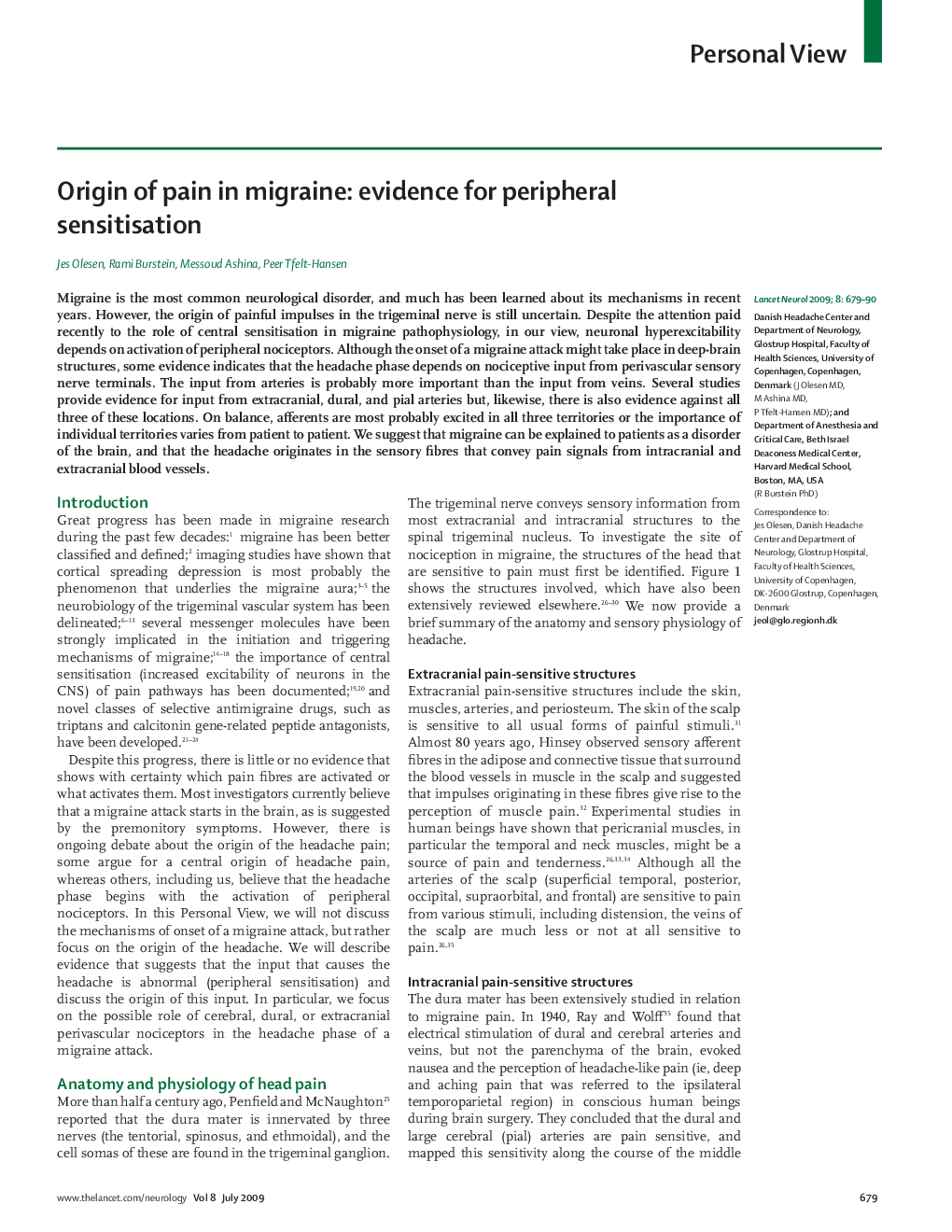| Article ID | Journal | Published Year | Pages | File Type |
|---|---|---|---|---|
| 3067338 | The Lancet Neurology | 2009 | 12 Pages |
SummaryMigraine is the most common neurological disorder, and much has been learned about its mechanisms in recent years. However, the origin of painful impulses in the trigeminal nerve is still uncertain. Despite the attention paid recently to the role of central sensitisation in migraine pathophysiology, in our view, neuronal hyperexcitability depends on activation of peripheral nociceptors. Although the onset of a migraine attack might take place in deep-brain structures, some evidence indicates that the headache phase depends on nociceptive input from perivascular sensory nerve terminals. The input from arteries is probably more important than the input from veins. Several studies provide evidence for input from extracranial, dural, and pial arteries but, likewise, there is also evidence against all three of these locations. On balance, afferents are most probably excited in all three territories or the importance of individual territories varies from patient to patient. We suggest that migraine can be explained to patients as a disorder of the brain, and that the headache originates in the sensory fibres that convey pain signals from intracranial and extracranial blood vessels.
